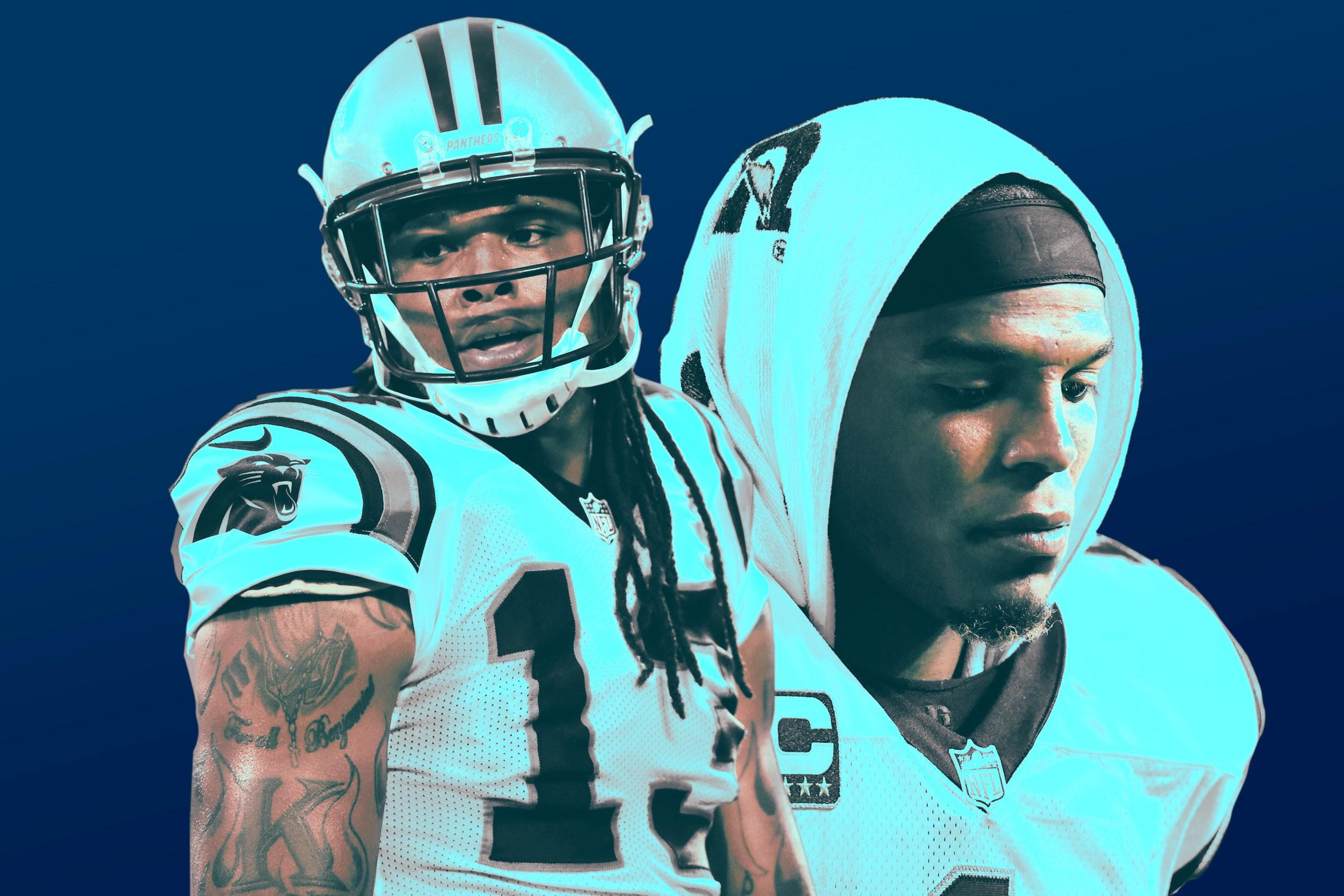
Cam Newton is too damn good for anyone to worry about the Panthers just yet. Let’s begin there. But this still can’t be the start that coach Ron Rivera’s team envisioned, especially coming off its letdown in last February’s Super Bowl.
Carolina is 1–2 — already with one more loss than it had last regular season — and its offense has struggled in two of its first three outings. The Broncos’ and Vikings’ defenses could legitimately be the subjects of horror movies, and the first month of Newton’s season has bordered on Friday the 13th levels of gruesome. He’s been sacked 12 times and hit 23; after throwing just 10 interceptions during the 2015 campaign, he’s been picked off five times this fall. Denver and Minnesota represent hideous matchups for the Panthers’ offense — each features a ferocious pass rush, a stable of capable cornerbacks, and a rangy linebacking corps that can limit Newton as a runner — but even taking into account that it’s gone against what might be the two best defenses in the league, Carolina’s play has been uninspiring.
Newton is still the quarterback that he was a year ago: the reigning MVP who was more than deserving of the crown. The question for the Panthers is whether his ability to buoy the offense — and this season, maybe even the entire roster — will be enough to keep them among the best teams in the NFC.

There’s no secret formula for teams trying to figure out how to stop Newton and Co., unless it’s countering them with an onslaught of great players. Both Denver and Minnesota have plenty.
Von Miller is still on the Broncos’ roster, and the Week 1 sequel to Super Bowl 50 looked a lot like the original. Denver finished its 21–20 win with three sacks and eight quarterback hits, including a pair of shots that should have had Newton temporarily removed from the game, in accordance with the league’s concussion protocol. In the Super Bowl, the Broncos dominated the Panthers on plays in which they brought five rushers, and Week 1 was no different. Any time the Broncos can guarantee that they’ll face single blocks along the line, defensive coordinator Wade Phillips is confident that he has the talent to win. Enter DeMarcus Ware.
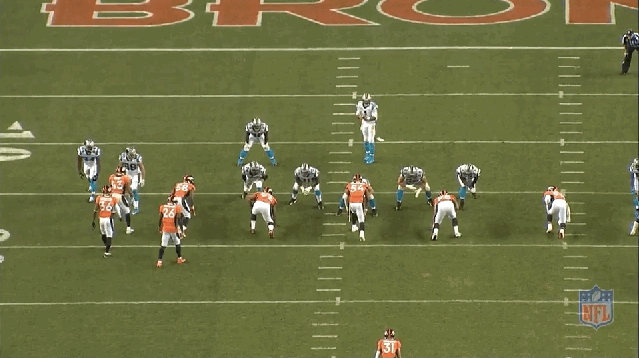
For Newton, though, the opener was almost tame compared to the thrashing that he endured last Sunday against Minnesota. Almost all of the damage — eight sacks and 12 QB hits — came off the left side, where the Vikings’ Everson Griffen manhandled tackle Michael Oher throughout Minnesota’s 22–10 victory. Danielle Hunter also knocked Oher flat on his ass in an ugly first-quarter play that led to a sack and a safety.
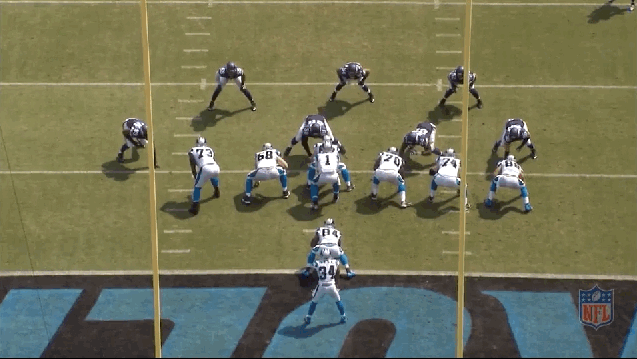
Oher signed a three-year extension with the Panthers in June that included $9.5 million in guarantees, a reminder that despite the team’s offensive line struggles in the Super Bowl, Carolina was content to retain mostly the same personnel that helped it average a league-high 31.3 points per game during the 2015 campaign. General manager Dave Gettleman didn’t make a single substantial move on that side of the ball this offseason, instead hoping that last year’s group, coupled with the return of star wide receiver Kelvin Benjamin (who missed all of last season with a torn ACL), would be enough to sustain the potency the Panthers had a year ago.
Benjamin put together a pair of monster performances in Weeks 1 and 2, racking up 13 catches for 199 yards with three touchdowns, but he failed to make a single grab against the Vikings. Minnesota’s hit parade in the Carolina backfield was primarily responsible for that, but the Vikings also did a fantastic job at mixing up their coverages (even between sides of the field on a given play) throughout the game. When cornerback Xavier Rhodes — seeing his first action this season after recovering from a knee injury — got a chance to cover Benjamin man-to-man, he was Spiderman levels of sticky. But that was far from Minnesota’s only approach. Head coach Mike Zimmer used an eight-man front several times last Sunday, and it turned into a slew of different looks at the snap. Seemingly all of them gave the Panthers trouble.
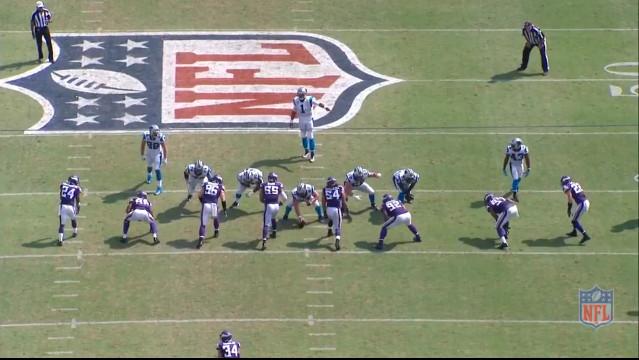
For some teams, the solution to keeping their quarterback clean is a steady diet of quick throws. Against the Vikings, though, most of Newton’s options were the down-the-field routes the Panthers love. When Carolina is worried about Newton getting erased from the planet, its move isn’t to quicken his decisions. It’s to put more bodies in front of him.
The Panthers’ approach last season involved insulating Newton with as many blockers as possible. Carolina’s offense averaged 6.5 offensive players in the box, comfortably the most in the league. With fewer receivers running routes, the burden fell on him to deliver tight throw after tight throw while his wideouts were outnumbered by defensive backs. Newton built a frightening passing game in spite of this. Physically, he was sent here from the future, and, no matter the circumstances, he’s going to make a couple of freak plays per game.
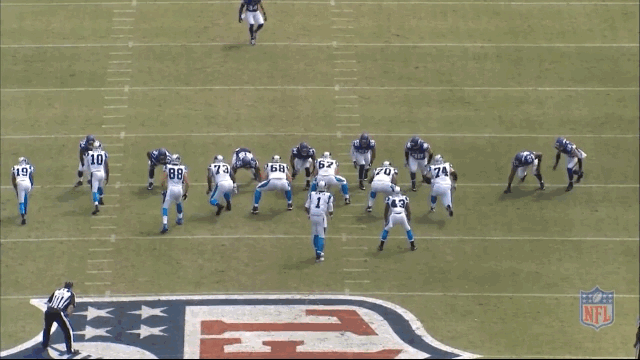
Against Minnesota, the Panthers’ central problem was that a combination of penalties (Carolina was called for five holding penalties against Minnesota) and an early deficit pushed them away from their max protection looks. Four receivers played at least 50 percent of the offensive snaps, and when the Panthers were giving extra help, it was often to Mike Remmers’s side of the line. The results were typically something like what happened below, when Griffen tore off the edge and took down Newton before he even had time to blink.
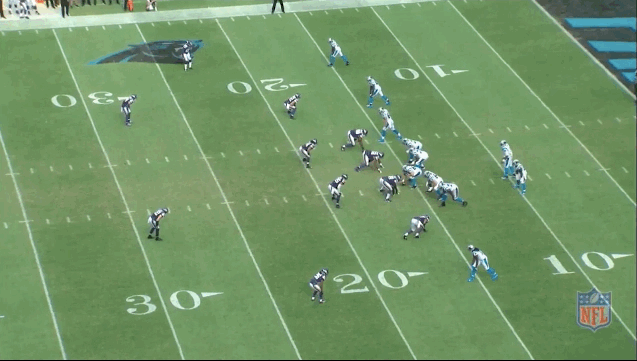
As free-agent offensive lineman Geoff Schwartz pointed out on Twitter, Carolina’s tackles consistently take vertical pass sets that involve retreating from the line of scrimmage as fast as they can. By playing to cut off the edge, they leave very little space between them and Newton, offering almost no wiggle room on any given play. Another factor that contributed to Carolina’s issues against the Vikings was a lackluster threat on the ground. Save for a 12-yard gain on his opening attempt, backup running back Cameron Artis-Payne averaged 3.2 yards per carry on 11 rushes. Artis-Payne, a second-year back, was playing in place of injured starter Jonathan Stewart, who was out nursing a hamstring injury.
Stewart missed three games last year, but the 2015 season was still his healthiest since 2011, when he played in all 16 games but carried the ball just 142 times. In fact, outside of Benjamin, the Carolina offense stayed remarkably healthy last fall. It missed three total starts along the line, and none from Newton or Greg Olsen, its two most valuable pieces. Health is a tiny advantage that helps a unit with marginal talent at most spots but exceptional talent at others finish eighth in offensive DVOA.

It’s easy for a team that went 15–1 last season to take a step back; the question for Carolina was just how big of a step that might be. The defense was likely to be slightly worse after the offseason departure of Josh Norman, but so far the Panthers’ trouble spot has largely come up front.
A week after the Packers laid waste to Minnesota’s Sam Bradford, recording 12 quarterback hits in a 17–14 loss, Carolina hit the QB just three times last weekend.
That equaled the number of hits the Panthers had on Broncos quarterback Trevor Siemian in Week 1. Denver’s game plan involved plenty of short, quick throws, but the first-year starter had plenty of room to work, even on slow-developing passes.
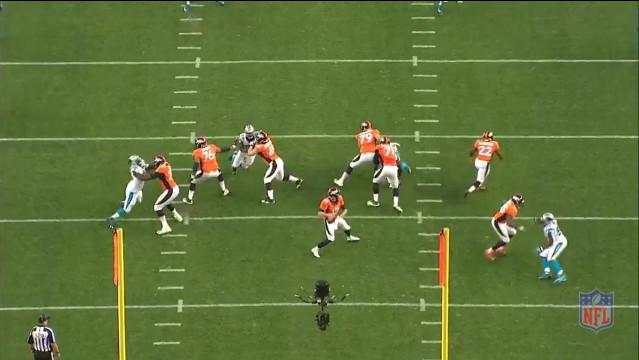
Except for sacks by Tre Boston and 2016 first-round pick Vernon Butler, the Panthers failed to create much push with their front four. Carolina had only a single sack from its defensive line in each of its two losses, with most of its pressure-inducing looks involving a least one linebacker or defensive back coming on a blitz. That isn’t who the Panthers want to be. Only seven teams rushed four more often than Carolina last season, according to Football Outsiders, and that makes sense for a unit that boasts Luke Kuechly and Thomas Davis at linebacker. With Norman gone, those two are the best pass defenders on the roster.
It may seem strange to think a team’s linebackers could prop up a pair of rookie corners (James Bradberry and Daryl Worley), but Carolina’s zone-based schemes are dependent on every player holding up his end of the bargain. A crack in one area creates problems across the entire defense. It hasn’t been much of a problem so far, but the Panthers have also faced a quarterback trio of Siemian, Blaine Gabbert, and Bradford. When Carolina has elected not to blitz, offenses have been content to double-team stud defensive tackle Kawann Short and dare the rest of Carolina’s front to win one-on-one matchups. That hasn’t worked for Carolina, and if defensive coordinator Sean McDermott is eventually forced to put more resources into chasing the quarterback, the Panthers’ defense may take a significant hit against more high-octane passing games.
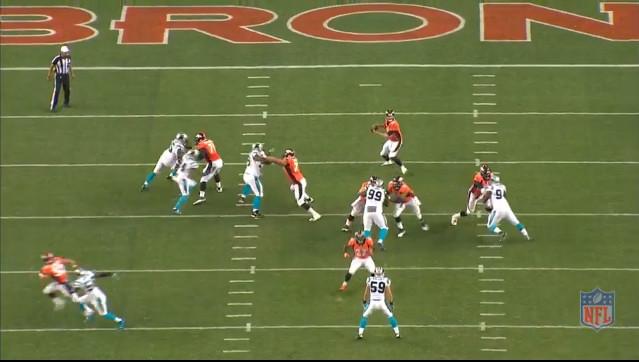
The hope for Carolina was that an offense led by Newton and a healthy Benjamin could overcome whatever drop-off might happen on defense. Three weeks into the season, though, it’s tough to say if that’s the case.
Despite their struggles against the Broncos and the Vikings, the Panthers pasted the 49ers in Week 2, with Newton throwing for 353 yards and four scores in a 46–27 rout. Carolina’s passing game is dependent on Newton making ridiculous, late throws over the middle of the field, and, in Benjamin, he has an oak tree–sized target to hit. This throw against the Broncos is a sign of what we should expect to see moving forward.
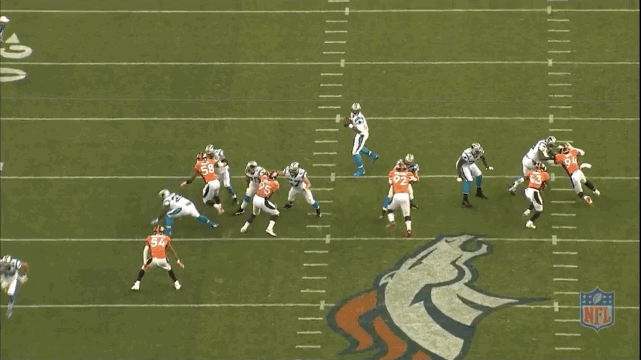
It’s entirely possible that this connection will be rekindled against a soft Falcons defense on Sunday, and the Panthers will roll past Atlanta, Tampa Bay, and New Orleans to improve to 4–2. If that happens, they’ll sit atop the NFC South, and we’ll wonder why anyone was ever concerned in the first place.
But Carolina’s 2016 aspirations were always higher than bullying the also-rans in its division. After going 15–1 last season and earning a trip to the Super Bowl, Rivera’s team had to be thinking that it was again the clear NFC front-runner. It still very well might be, but the weaknesses that surfaced late in 2015 have already shown up this fall. In January, when every week would bring an opponent of the Vikings’ and Broncos’ caliber, it’s possible that not even Newton’s heroics would be enough to save the Panthers.